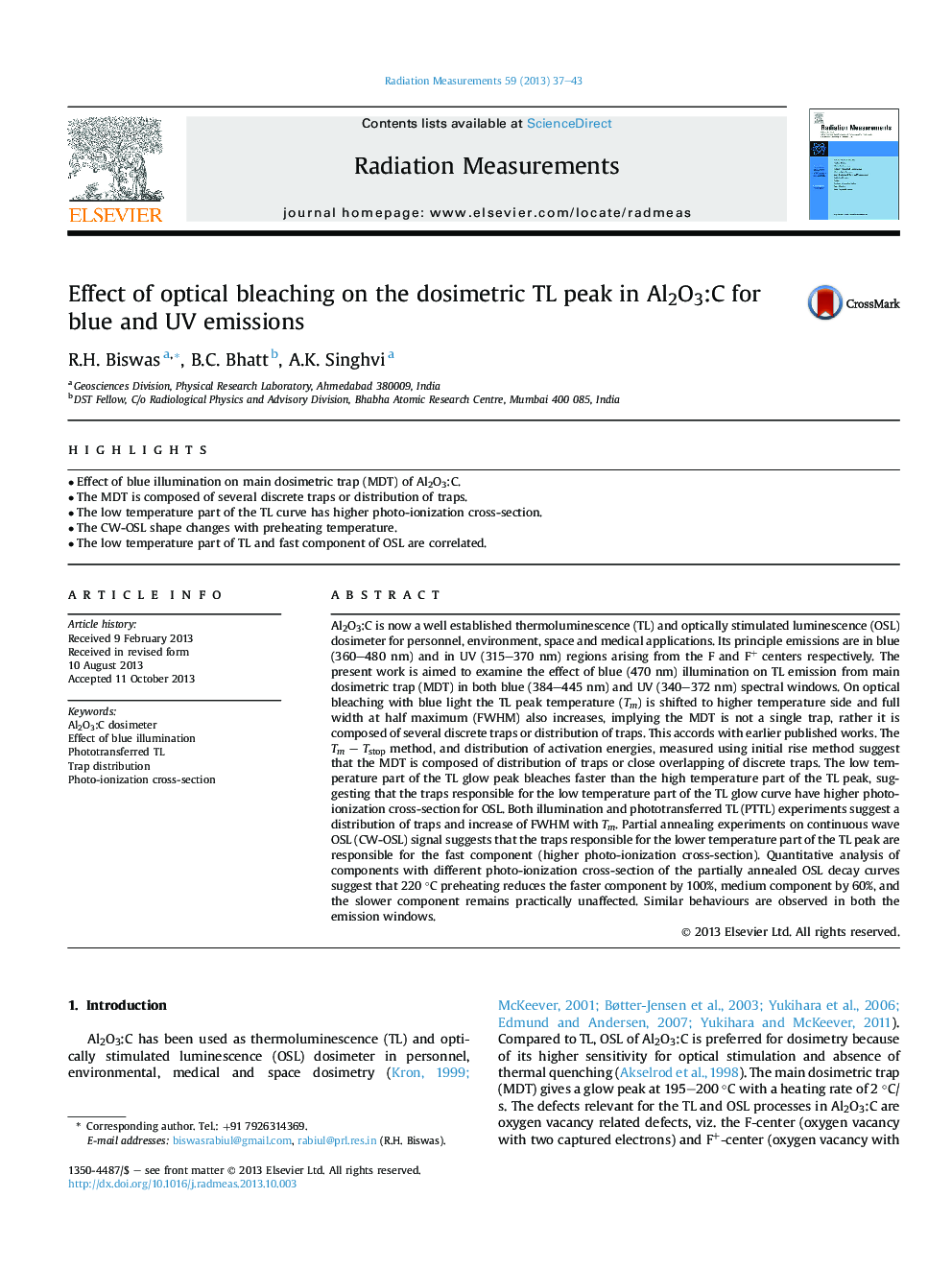| Article ID | Journal | Published Year | Pages | File Type |
|---|---|---|---|---|
| 1888243 | Radiation Measurements | 2013 | 7 Pages |
•Effect of blue illumination on main dosimetric trap (MDT) of Al2O3:C.•The MDT is composed of several discrete traps or distribution of traps.•The low temperature part of the TL curve has higher photo-ionization cross-section.•The CW-OSL shape changes with preheating temperature.•The low temperature part of TL and fast component of OSL are correlated.
Al2O3:C is now a well established thermoluminescence (TL) and optically stimulated luminescence (OSL) dosimeter for personnel, environment, space and medical applications. Its principle emissions are in blue (360–480 nm) and in UV (315–370 nm) regions arising from the F and F+ centers respectively. The present work is aimed to examine the effect of blue (470 nm) illumination on TL emission from main dosimetric trap (MDT) in both blue (384–445 nm) and UV (340–372 nm) spectral windows. On optical bleaching with blue light the TL peak temperature (Tm) is shifted to higher temperature side and full width at half maximum (FWHM) also increases, implying the MDT is not a single trap, rather it is composed of several discrete traps or distribution of traps. This accords with earlier published works. The Tm – Tstop method, and distribution of activation energies, measured using initial rise method suggest that the MDT is composed of distribution of traps or close overlapping of discrete traps. The low temperature part of the TL glow peak bleaches faster than the high temperature part of the TL peak, suggesting that the traps responsible for the low temperature part of the TL glow curve have higher photo-ionization cross-section for OSL. Both illumination and phototransferred TL (PTTL) experiments suggest a distribution of traps and increase of FWHM with Tm. Partial annealing experiments on continuous wave OSL (CW-OSL) signal suggests that the traps responsible for the lower temperature part of the TL peak are responsible for the fast component (higher photo-ionization cross-section). Quantitative analysis of components with different photo-ionization cross-section of the partially annealed OSL decay curves suggest that 220 °C preheating reduces the faster component by 100%, medium component by 60%, and the slower component remains practically unaffected. Similar behaviours are observed in both the emission windows.
